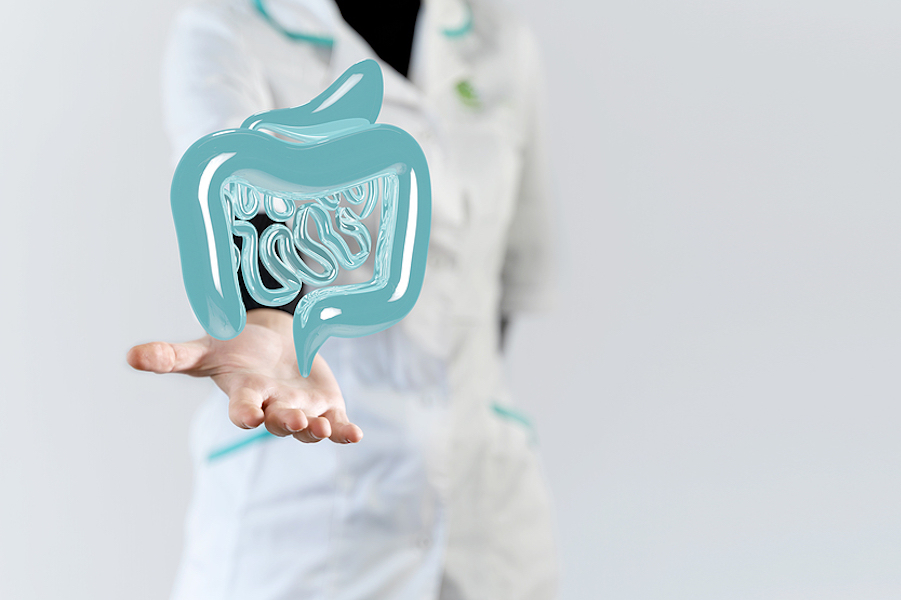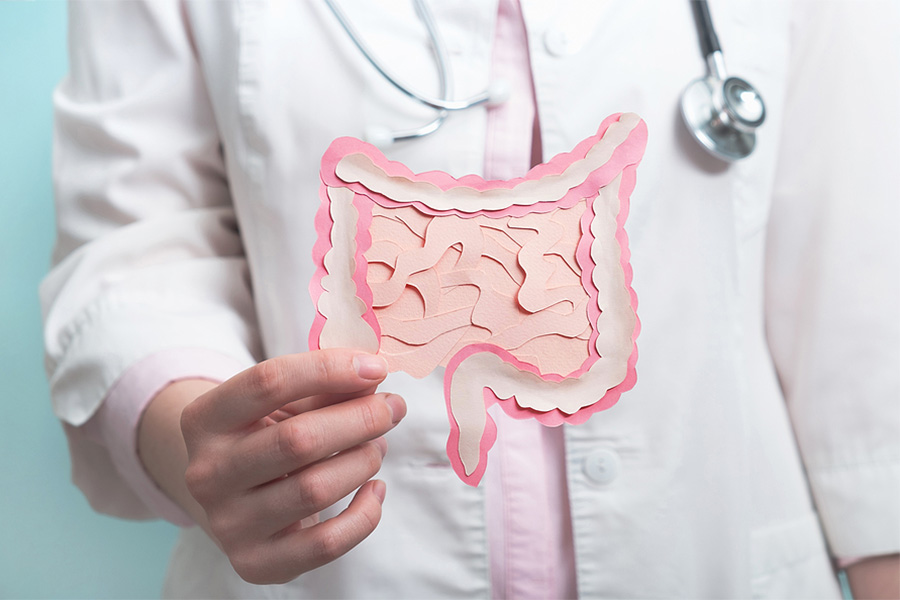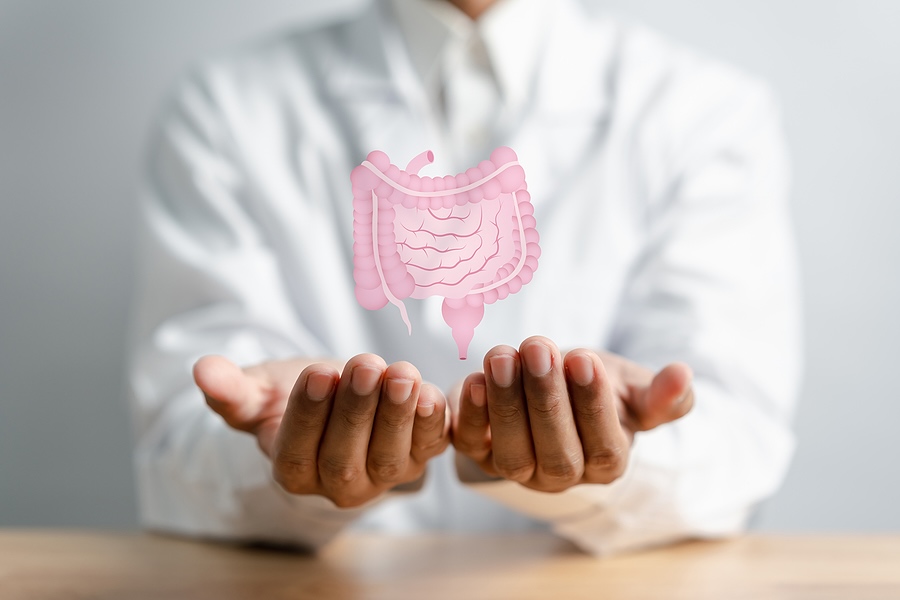Think fast: what’s your pH?
If you are like a lot of my patients, you might be familiar with the term “pH” from biology class or a skin cleanser commercial. And the idea of balancing your inner pH has become trendy these days, featured in magazines and spawning an assortment of products in health food stores. But beneath the “trendiness” lies an important concern: the fact that the diet of most Americans is overloaded with foods that are acid-forming, which tip the body’s pH toward acidity. And while our bodies are equipped to counterbalance a certain amount of acidity, what we’re seeing is that the standard American diet overwhelms our ability to buffer the acids in our diets — particularly when other acid-promoting factors such as stress enter the picture.
When they learn about the pH trend, my patients often ask, “When it comes to health, what role does pH really play?” Some proponents would have you believe that balancing your pH will cure all health woes. While pH is one of many factors I look at when considering a woman’s health, I never consider it in isolation. That approach would be too simplistic, and would fail to take into account the complex role pH plays in our physiology. That said, it is an essential factor in our overall health equation, so let’s take a look at how pH imbalance affects us — and what we can do to correct it.
Understanding the pH scale
The derivation of the “pH” is variously traced to terms meaning potential for hydrogen or hydrogen power.
The pH scale measures acidity in terms of hydrogen ion (H+) activity in a solution. A solution is acidic when it has more free hydrogen activity, and alkaline when there is a lack of free hydrogen activity.
The lower the pH reading, the more acidic the solution. Readings from 0–7 are considered acidic, and numbers from 7.0–14 are considered basic, or alkaline. Pure water, in the very middle of the (logarithmic) pH scale, has a pH of 7.0, which is considered neutral.
Body pH balance
In terms of body pH balance, there is no one “correct” reading for the entire body. For instance, healthy human skin has an approximate pH of 5.5 (slightly acidic). Saliva, on the other hand, has a pH of around 6.5–7.4 (teetering on either side of neutral). Your digestive tract’s pH can range from 1.5 to 7.0, depending on what stage of digestion is underway. And when the body is in good working order, human blood reveals a narrow pH window of about 7.35–7.45 (slightly alkaline). Other parts of a healthy, well-functioning body will show still other pH readings.
Why is this? It’s all part of the same body, so why wouldn’t a person’s acid–alkaline balance be the same all over? Because different parts of our bodies serve different purposes. Each of these purposes and their related processes requires a particular acid–alkaline environment for optimum function.
Skin needs to be slightly acidic in order to deal with environmental factors like bacteria and other toxins. Likewise, the vagina maintains an acidic environment to protect itself, and when the pH is raised too high, infections like bacterial vaginosis and yeast infections can result. The stomach and other parts of the digestive system are highly acidic out of biological necessity. The digestive acids are part of how we process and use the foods we eat as fuel. They are part of our internal combustion for nutrition.
Part of the confusion over body pH arises from the close-to-neutral pH balance of our blood, saliva, and urine — substances we can test easily. This has led to the mistaken belief that pH levels are static throughout the body, when in fact they are not. Eating more alkalizing foods (such as leafy greens and dried fruits) can help balance and maintain the pH level of your body and ultimately promote better well-being, but this doesn’t happen in a vacuum, and it also doesn’t happen overnight. Along with a diet rich in alkalizing plant foods, it takes time and commitment to certain lifestyle changes, including exercise and regular detoxification. It also takes knowing whether or not your pH is truly off-balance.
Enthusiasts of the “pH miracle” say that simply living in the modern world — with its reliance on refined grains and sugars, corn-fed beef, and unhealthy fats — means we are all overly acidic. To rectify this, we should focus all our attention on restoring “healthy pH,” by which they mean a blood pH of 7.35–7.45. I fully agree that most people could benefit by addressing their acid–base balance, but before anyone begins megadosing on supplements or downing gallons of “green” water, they need to define their individual needs. (Remember, the key to pH is balance!) And the best way to do this? Test your pH.
Testing your pH
Physicians use esophageal and gastric pH meters to help identify the causes of heartburn and gastroesophageal reflux disorder (GERD). Such tests determine the amount of acid in the environment being tested. Similarly, you can test the pH of your saliva and/or your urine with simple litmus strips, which are available in most pharmacies. Keep in mind that in order to get the full picture of your body’s pH, you’ll need to carry out the test not just on one day, but daily for a period of time.
Tracking your urine or salivary pH over the course of a week or so will provide a window into what is going on in your internal world. A diet that lacks essential vitamins and nutrients and is high in acid–forming foods will show up in acidic urine. This is a good indicator that your body is struggling to maintain an optimal digestive environment (also affected by your intestinal flora and immune system), which could be contributing to systemic inflammation — that ubiquitous bugaboo at the root of so many chronic health concerns, including heart disease, high blood pressure and obesity.
If conditions of hyperacidity and inflammation are occurring in your body, the next step is to take a look at the source of the acidity — and food is the first place to start. Imbalanced pH is primarily a product of what you eat — although this might not mean what you think it does.
You may think it’s acid — but it’s not
Considering whether a food is acidifying or alkalizing in the diet can require some mind-bending, because some foods that we think of as “acidic” are, in fact, alkalizing in the diet. It’s actually better to look at whether the food is acid–forming or alkaline–forming, not where the food itself falls on the pH scale. So even though we think of citrus as acidic, fruits like lemons and tangerines are alkalizing because when they’re consumed, they break down and donate alkaline mineral salt compounds like citrates and ascorbates.
Similarly, foods we might normally think of as meek and mild in nature are acid-forming when ingested. Grains and milk are two examples. What’s important is not so much the pH of the food as it goes into our bodies, but the resultant pH once the food is broken down — and this is dictated by the residues the broken-down nutrients leave behind, particularly sulfates and phosphates.
But this isn’t the sort of association most of us can readily make, so we have compiled a list of common acidic and alkalizing foods to guide you (refer to our Acid Alkaline Food Chart). But why is it important to have a certain acid–alkaline balance in our diets? The answer has to do with the dance that occurs between acid and alkaline elements in our digestion.
Digestive enzymes, microbes, nutrients, and pH balance
As mentioned earlier, pH within the digestive tract isn’t a constant, and in each zone of increasing acidity, there are different digestive enzymes and beneficial microbes present. In the mouth, where the process begins, the pH is only mildly acidic, and the enzyme amylase is present. Amylase, responsible for breaking down starch, works in a fairly neutral environment, so when the pH falls below 6.5 it is no longer active.
Acid isn’t all bad
The acidic environment of the stomach is not only necessary for processing food, but it also helps to protect your body from pathogenic organisms or food antigens that shouldn’t be there.
Interestingly, many people with acid reflux and heartburn — a condition conventional medicine blames on acid-containing foods like fruits and vegetables — actually have too little acid in their stomachs, a problem that’s compounded by medications like Pepcid and TUMS that increase alkalinity in the stomach.
Many of my patients get rid of their heartburn and acid reflux by adding more acid, not less, to their diets. For more on this, please see our article on the link between IBS, acid reflux, and antacids.
As food makes its way from your mouth to your stomach, the digestive tract becomes more acidic. Pepsin, the enzyme responsible for protein breakdown, needs an acidic environment and therefore gets released into the stomach, where pH is very low (about 2.0–1.5). Your small intestine is where most of the nutrients in your food get absorbed, and where the pH increases from 2.0 to 6.5 as the food travels from the stomach to the small and large intestines.
Protein — particularly in the form of red meats — requires huge amounts of alkaline minerals for complete digestive processing. When the system goes looking for the alkalinity needed to offset the acid load, it looks first to the minerals currently in the digestive tract. If it fails to find alkaline nourishment there, it draws on the calcium, magnesium, phosphorus and potassium minerals stored in our bones.
This is where the good greens and essential vitamins and minerals come in. When we eat a diet that is rich in nutrients, there’s no need to draw on the stored minerals in the bones. It’s when we don’t consume a nutrient-rich diet — or, worse, when we over consume foods that promote acidity in the body — that we start tapping our bone resources. In the short term, this isn’t an issue, but in the long run, it can have serious consequences, not just for our bone health but for our overall health.
pH and disease
It make sense, given that the bones are the storehouse for alkalizing minerals, that when the body has to drain the stores to offset acid overload in the digestive tract, the net result can be loss of bone density, which can lead to osteopenia and ultimately osteoporosis. We talk about this at length in our bone health section. But bone loss is not the only health issue that stems from overdrawing our accounts at the bone mineral bank.
As I mentioned earlier, when your body struggles to maintain the relatively tight blood pH required for survival, it can result in inflammation. Over time, this struggle may be mirrored by a steady rise of the pro-inflammatory blood acid homocysteine in your blood. Studies show that high levels of homocysteine in the blood double the risk of osteoporosis–related fractures, along with other inflammatory conditions like heart attack, stroke, fuzzy thinking, and Alzheimer’s disease. One report published in the New England Journal of Medicine explained how elevated homocysteine levels inhibit new bone formation by interrupting the cross-linking of collagen fibers in bone tissue.
Homocysteine levels can be stabilized by eating foods and taking a vitamin supplement rich in folic acid, B12, and B6. Some researchers also describe a beneficial synergistic effect on homocysteine levels between omega–3 fatty acids and the metabolism of these vitamins.
Be aware that a minority of the population cannot convert folic acid due to certain enzyme deficiencies. If your homocysteine levels remain high even after a few weeks of B supplementation, you may want to ask your practitioner about adding a more bioavailable form of folate called 5-methyl-tetrahydrofolate (MTHFT) to your diet.
Naturally improving your pH balance
Proponents of alkaline diets sometimes talk as though eating alkaline is the only step necessary for good health. It’s true that our bodies know intuitively where balance lies, and they can maintain balance on their own if provided what they need through healthy diet and nutritional supplements. But it’s important to understand that you can’t simply load up on alkalizing foods and supplements and presume they’ll offset any amount of acid you consume or create. To restore pH balance, you must address other sources of metabolic acidity as well, because in most situations, no amount of alkalizing can balance a toxically acidic environment. And to cap it off, detoxification takes place more slowly in an overly acidic environment.
Here are some ideas on how to restore pH balance to your diet, support healthy digestion, keep blood pH levels on track, and protect your bones and kidneys, too.
- Take a high-quality daily multivitamin. This will offset any nutritional gaps and insure that your body has the reserves it needs. Your supplement should contain essential vitamins and minerals, including calcium and magnesium in their most bioavailable, alkalizing forms. In addition, I recommend an essential fatty acid supplement and a top-quality probiotic to help the body absorb the minerals that are all-important to your bones. Marcellepick.com has formulated high-quality and pure supplements to assist you with this goal.
- Fill your plate with fresh vegetables, particularly the dark green leafy kind. Add fresh lemon or lime juice to foods and beverages as a highly alkalizing flavor accent. Enjoy plenty of fruit, especially fruit with a low glycemic index. Women in perimenopause and menopause, particularly, benefit more from fruits that are lower in sugars, to avoid concerns about insulin resistance. Again, foods that are fresh, organic, and deeply pigmented or brightly colored are the kinds that benefit you the most!
- Choose root vegetables, too, as excellent sources of alkalizing mineral compounds. Eating foods such as slow-roasted sweet potatoes, onions, and leeks, which are also high in inulin, can optimize your body’s ability to fully absorb the calcium present in your food and thereby decrease your risk for osteoporosis. Inulin is a type of prebiotic — it is believed to serve as a welcoming “fuel” for friendly gut flora, paving the way for beneficial bacteria to thrive further down into the colon, where it lowers the pH and improves the solubility and absorption of calcium by the body.
- Consider boosting your diet with “green foods” or “green drinks,” which contain the pigment chlorophyll in abundance. The plant world’s equivalent of the hemoglobin in our blood, we can thank chlorophyll as the original source of all our food (except perhaps fungi). It works in the body as a strong detoxifier and immunity–building agent. Foods that contain high levels of chlorophyll include the algae spirulina and chlorella and the juice of wheatgrass and other sprouted grains. These foods offer high levels of other micronutrients as well, and their neat packaging can be especially helpful for those who lack time to prepare whole balanced meals or people recovering from illness.
- Eat plenty of vegetable protein, watch your red meat intake, and keep your servings of the acidifying animal proteins down to four ounces per meal (the size of a deck of cards).
- Avoid refined carbohydrates whenever you can, including sugar, and when you include grains, be sure to emphasize the “whole” in whole grains. Eliminate all processed foods, particularly those that contain partially hydrogenated oils (trans fats).
- Clear your digestive slate with a gentle detox plan, to get a better reading on how your diet — and pH — are affecting your sense of well-being. You may be surprised at how well you feel!
- If you suffer from IBS, acid reflux, or regular heartburn, consider testing your pH. Remember that you may have too little acid in your stomach, not too much. Don’t just assume that an acid stomach means you’re too acidic.
- Chew your food slowly and thoroughly. Enjoy every bite!
The beauty of balance
The subject of body pH may be having it’s 15 minutes of fame — but if it helps you to tune in to what’s going on in your body and eat a healthier diet, I’m all for that. Indeed, there are some people whose pH levels warrant attention — but you won’t know until you test your pH, and you may need a good functional medicine practitioner to guide you. Even so, pH is only one, albeit fundamental, piece of the puzzle. To my mind, pH is a helpful indicator of overall balance in the body. But it’s just the tip of the iceberg, and no amount of trendy drinks or diet plans will make it more than that.
That being said, paying attention to your pH is one place you can begin to make an immediate positive change to preserve your long-term health. If it feels like a good place for you to start taking better care of yourself, I encourage you to do so. From there, it’s my hope that you will continue to listen to your body and help it find balance on all fronts, including your hormones, your emotions, and your lifestyle.







